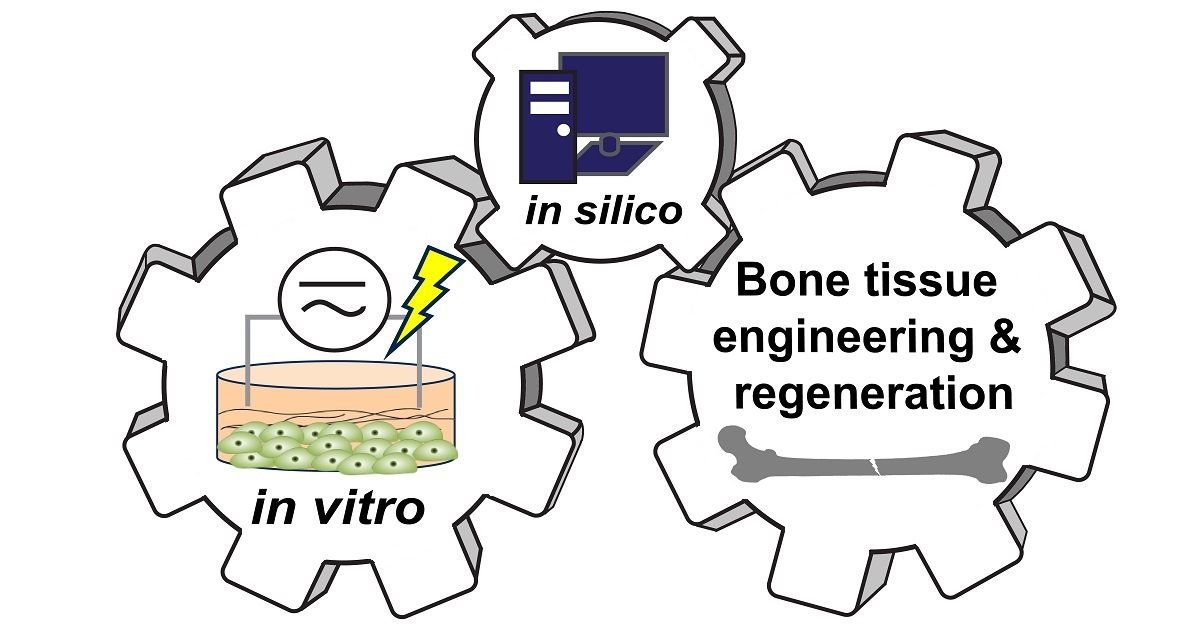Effect of Electric Field on Stem Cells, Bone/Cartilage Cells, Neurons for Tissue Engineering and Regenerative Medicine
A special issue of Applied Sciences (ISSN 2076-3417). This special issue belongs to the section "Applied Biosciences and Bioengineering".
Deadline for manuscript submissions: closed (20 April 2023) | Viewed by 9600

Special Issue Editors
Interests: electromagnetic field theory; computational electromagnetics; numerical simulation of electromagnetic fields; computational bioelectromagnetism; multiscale and multiphysics modeling and simulations; uncertainty quantification
Interests: electromagnetic field theory; computational bioelectromagnetism; numerical simulation of electromagnetic phenomena; modeling and simulation of biological systems for implant studies and their interactions; computational neuroscience; membrane electrostatics; tissue engineering; multiscale and multiphysics modeling and simulations; uncertainty quantification
Interests: biomaterial/biomimetic bioreactor development; bone/cartilage tissue engineering
Interests: influence of external electric fields on stem cell differentiation and cell migration; mean-field and finite element modeling of dynamical living systems; tissue morphogenesis during growth and development; biophysics
Special Issue Information
Dear Colleagues,
This Special Issue aims to consolidate current research to develop a comprehensive understanding of the influence of electric fields on stem cells and bone cells. The scope of this Special Issue ranges from experimental techniques for mathematical modeling to engineering methods for studying tissue regeneration. Therefore, contributions are invited in the form of research articles, reports, and reviews from all science and engineering disciplines focused on the effect of electric fields on cell differentiation, proliferation, and migration.
The influence of electric fields on different cellular processes has been the central aspect of cutting-edge research in biological, chemical, physical, and engineering sciences. We are interested in in vitro studies investigating the processes of bone remodeling in the presence of electric fields, as well as in silico models studying the molecular and cellular mechanisms that regulate cell response to applied electric fields. Additionally, articles on the synergy of in vitro and in silico studies for unraveling the mechanisms of cellular processes are also of interest.
Research related to the following topics, but not limited to, are invited for this Special Issue:
- Electric stimulation (AC/DC);
- Differentiation;
- Proliferation;
- Migration;
- Osteoblasts and mesenchymal stem cells;
- Mathematical modeling and simulation;
- Electrotaxis chamber;
- Bone tissue engineering;
- Bone remodeling;
- Regenerative medicine.
Prof. Dr. Ursula van Rienen
Dr. Revathi Appali
Dr. Poh Soo Lee
Dr. Jonathan E. Dawson
Guest Editors
Manuscript Submission Information
Manuscripts should be submitted online at www.mdpi.com by registering and logging in to this website. Once you are registered, click here to go to the submission form. Manuscripts can be submitted until the deadline. All submissions that pass pre-check are peer-reviewed. Accepted papers will be published continuously in the journal (as soon as accepted) and will be listed together on the special issue website. Research articles, review articles as well as short communications are invited. For planned papers, a title and short abstract (about 100 words) can be sent to the Editorial Office for announcement on this website.
Submitted manuscripts should not have been published previously, nor be under consideration for publication elsewhere (except conference proceedings papers). All manuscripts are thoroughly refereed through a single-blind peer-review process. A guide for authors and other relevant information for submission of manuscripts is available on the Instructions for Authors page. Applied Sciences is an international peer-reviewed open access semimonthly journal published by MDPI.
Please visit the Instructions for Authors page before submitting a manuscript. The Article Processing Charge (APC) for publication in this open access journal is 2400 CHF (Swiss Francs). Submitted papers should be well formatted and use good English. Authors may use MDPI's English editing service prior to publication or during author revisions.
Keywords
- AC/DC electric field
- bone tissue engineering
- regenerative medicine
- osteoblasts
- stem cells
- differentiation
- proliferation
- electrotaxis
- mathematical/computational modeling
- neuron
- brain stimulation
Benefits of Publishing in a Special Issue
- Ease of navigation: Grouping papers by topic helps scholars navigate broad scope journals more efficiently.
- Greater discoverability: Special Issues support the reach and impact of scientific research. Articles in Special Issues are more discoverable and cited more frequently.
- Expansion of research network: Special Issues facilitate connections among authors, fostering scientific collaborations.
- External promotion: Articles in Special Issues are often promoted through the journal's social media, increasing their visibility.
- e-Book format: Special Issues with more than 10 articles can be published as dedicated e-books, ensuring wide and rapid dissemination.
Further information on MDPI's Special Issue polices can be found here.








